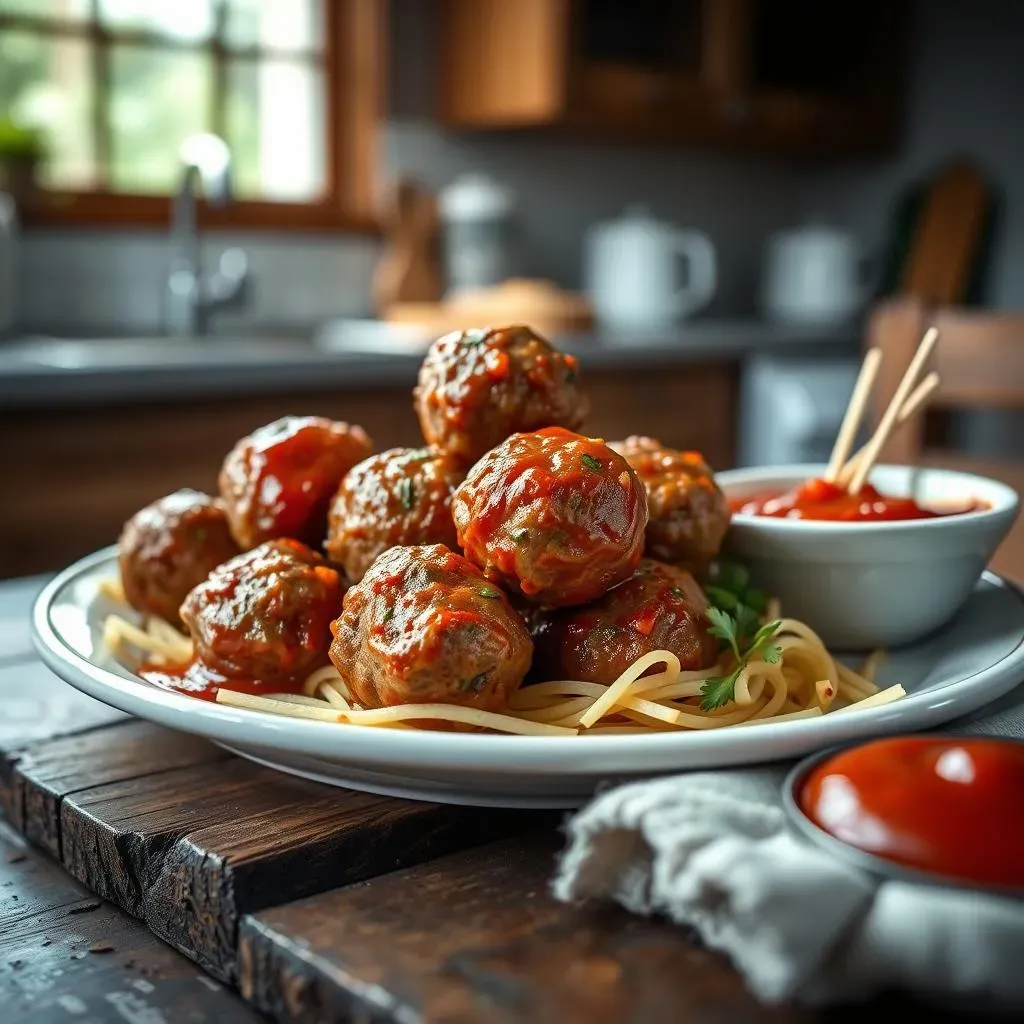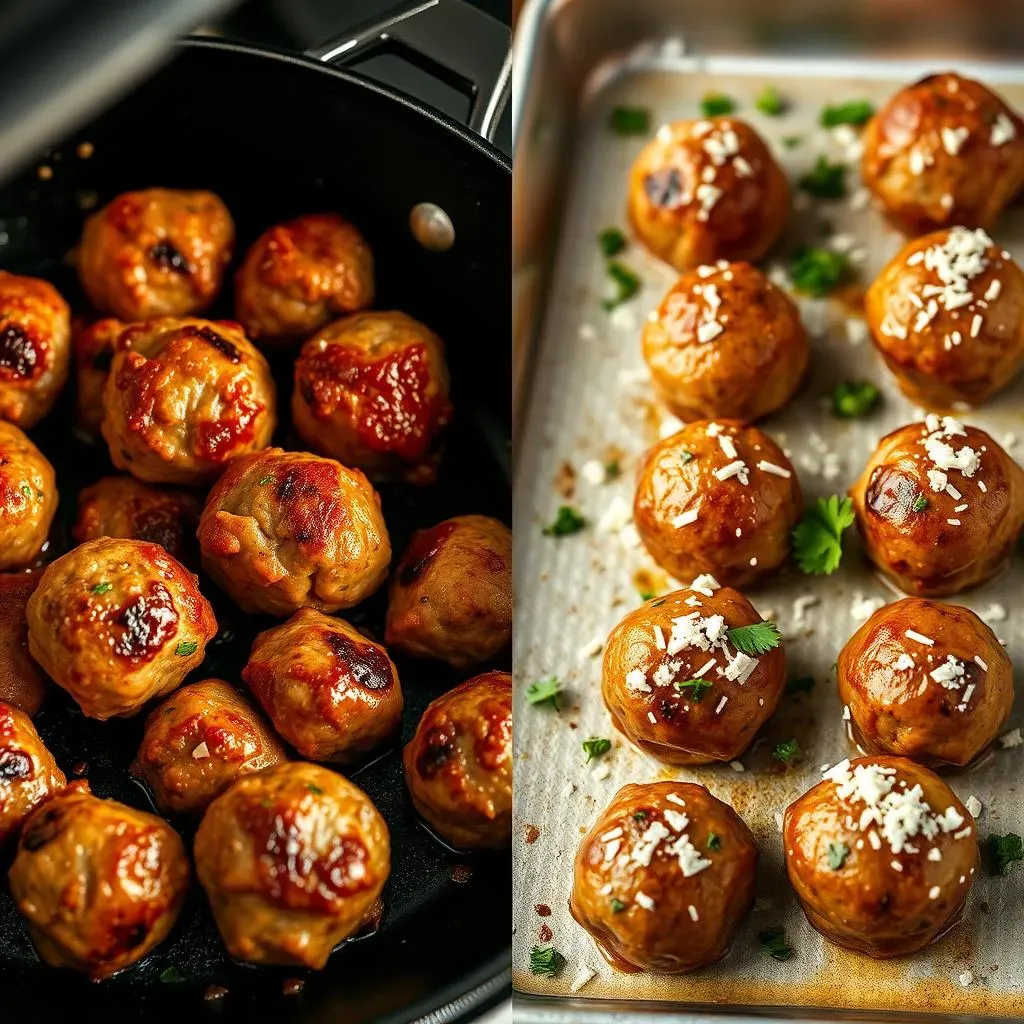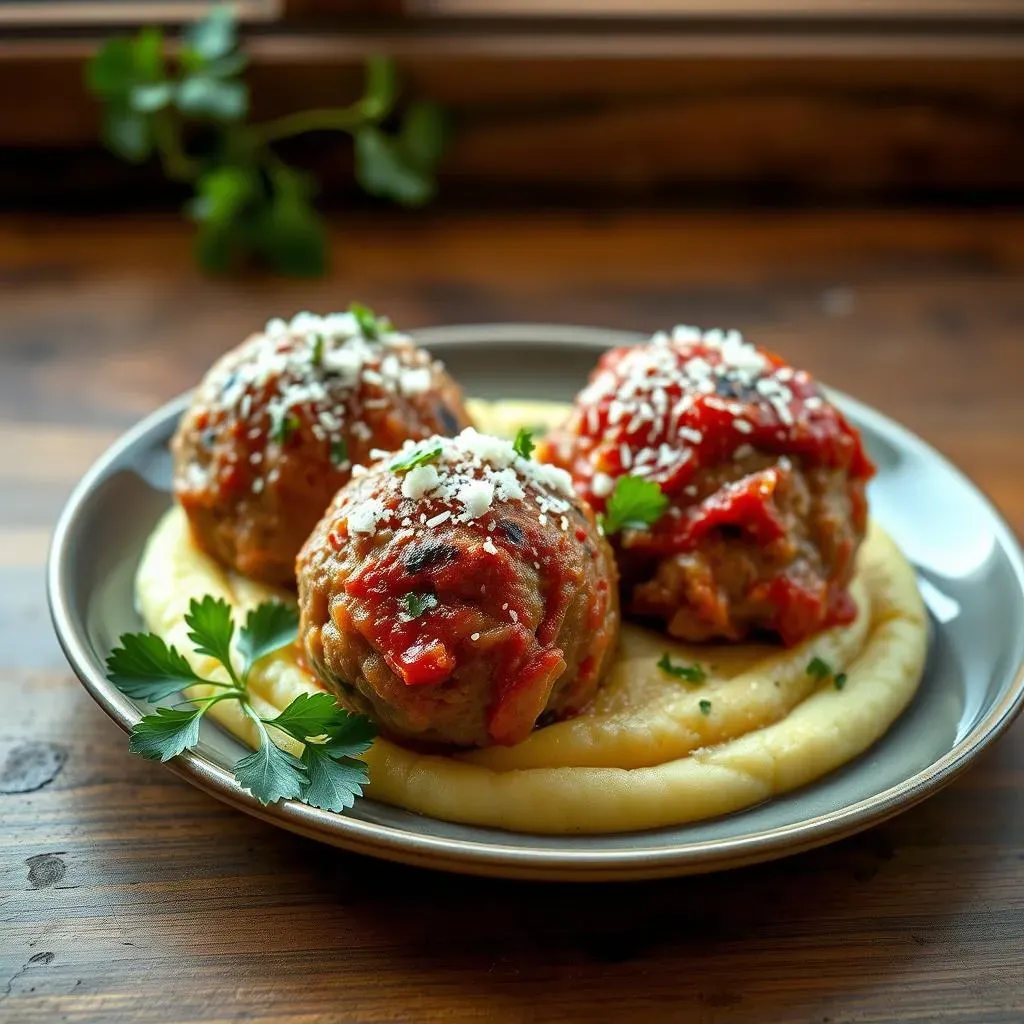Table of Contents
Are you ready to elevate your spaghetti night from ordinary to extraordinary? Then get ready to discover the secrets behind the best beef meatball recipe for spaghetti. This isn't just any meatball recipe; it's a journey into perfectly seasoned, juicy, and incredibly flavorful meatballs that will transform your pasta dish. We'll explore the crucial elements, from selecting the ideal ground beef to mastering the art of the perfect meatball mix. I'll walk you through both oven-baking and stovetop methods, ensuring you find the cooking technique that best suits your kitchen and preferences. But it doesn't stop there! We'll also explore creative serving suggestions and variations, taking you beyond the classic spaghetti and meatballs combination to create exciting new culinary adventures. Whether you're a seasoned cook or a kitchen novice, this guide will empower you to create restaurant-quality meatballs at home, guaranteed to impress your family and friends. So, let's embark on this delicious adventure together and discover the ultimate best beef meatball recipe for spaghetti!
Choosing the Perfect Ground Beef for Juicy Meatballs

Choosing the Perfect Ground Beef for Juicy Meatballs
The Fat Factor: Why It Matters
Let's talk fat! It's not the enemy here; in fact, it's your secret weapon for juicy, melt-in-your-mouth meatballs. Lean ground beef, while healthy, can result in dry, tough meatballs. Aim for a blend with around 20% fat – this will keep your meatballs moist and flavorful. Think of it like this: the fat renders during cooking, basting the meatballs from the inside out and creating that perfect texture. You can even find some great recipes using best ground beef for meatballs.
Don't be afraid to experiment! Some butchers will even custom grind blends for you. If you're feeling adventurous, try a mix of chuck and sirloin – the chuck provides the necessary fat, while the sirloin adds a rich, beefy flavor. For a truly decadent experience, check out this recipe for Wagyu beef meatballs – prepare for a flavor explosion!
Ground Beef Type | Fat Percentage | Meatball Texture |
|---|---|---|
Lean (80/20) | 20% | Can be dry |
Medium (70/30) | 30% | Juicy and tender |
Higher Fat (60/40) | 40% | Very juicy, but may require more draining |
Beyond the Blend: Exploring Different Cuts
While the fat content is key, the specific cut of beef also plays a role. Ground chuck is a popular choice for its balance of fat and flavor. However, don't shy away from exploring other options! Ground sirloin adds a leaner, more refined taste, while ground short rib offers a richer, more intense beefy flavor. The possibilities are endless!
Consider the overall flavor profile you're aiming for. If you want a classic, hearty meatball, stick with chuck. If you prefer a more delicate flavor, sirloin might be a better choice. For a truly unique taste, explore recipes that combine different ground meats, such as beef and pork or beef and veal. Remember, culinary creativity is all about experimentation!
- Ground Chuck: Classic choice, good balance of fat and flavor
- Ground Sirloin: Leaner, more refined taste
- Ground Short Rib: Rich, intense beefy flavor
Quality Matters: Sourcing Your Ground Beef
The quality of your ground beef directly impacts the flavor and texture of your meatballs. Opt for freshly ground beef from a reputable butcher whenever possible. You'll notice a significant difference in taste and texture compared to pre-ground beef from the supermarket. Freshly ground beef often has a brighter, more vibrant color and a more intense beefy aroma.
If you're buying pre-ground beef, look for labels that specify the percentage of fat. Avoid those labeled "extra lean" as they tend to produce dry meatballs. And remember, don't be afraid to ask your butcher for advice! They're experts in their field and can offer valuable insights into choosing the perfect ground beef for your meatball recipe. Looking for some keto-friendly options? Check out our keto beef meatball recipe.
Mastering the Meatball Mix: Ingredients and Techniques

Mastering the Meatball Mix: Ingredients and Techniques
The Flavor Foundation: Beyond the Beef
Okay, so you've got your amazing ground beef – fantastic! But the magic of a truly great meatball lies in the supporting cast of ingredients. We're talking about building layers of flavor, creating a symphony on your tongue, not just a solo beef performance. Think of it as a delicious ensemble – the ground beef is the star, but the other ingredients are the instrumentalists and backing vocals that bring the whole thing together.
Breadcrumbs are your best friends for binding and texture. Don't skimp on them! They soak up moisture, helping to prevent dry meatballs. Parmesan cheese adds a salty, umami punch that complements the beef beautifully. An egg acts as a natural binder, helping everything stick together. And don't forget the herbs and spices! Fresh parsley, oregano, and garlic are classic choices, but feel free to experiment with different combinations. For a unique twist, try adding a touch of red pepper flakes for a subtle kick. Need more ideas? Check out our beef meatball recipe ideas page for inspiration!
- Breadcrumbs: Binding and texture
- Parmesan Cheese: Umami and saltiness
- Egg: Natural binder
- Herbs & Spices: Flavor complexity
The Art of Mixing: Gentle is Key
Now for the mixing process – it’s all about being gentle. You don't want to overwork the meat mixture; this can make the meatballs tough. Think of it like kneading bread – you want to combine the ingredients, but not beat the life out of them. Use your hands lightly, just enough to incorporate everything. Over-mixing develops the gluten in the breadcrumbs and makes your meatballs tough. You want them tender and juicy!
Once you've gently combined all the ingredients, let the mixture rest for at least 15-20 minutes before forming the meatballs. This allows the flavors to meld together and the breadcrumbs to absorb moisture, ensuring your meatballs are bursting with flavor. Feeling adventurous? Check out our beef and sausage meatball recipe for a unique twist on the classic.
Ingredient | Function |
|---|---|
Breadcrumbs | Binding, Texture |
Parmesan Cheese | Flavor, Saltiness |
Egg | Binding |
Herbs & Spices | Flavor |
Cooking Your Meatballs to Perfection: Oven vs. Stovetop

Cooking Your Meatballs to Perfection: Oven vs. Stovetop
Oven-Baked Perfection: Even Cooking and Easy Cleanup
Baking your meatballs offers even cooking and requires minimal attention. Preheat your oven to 375°F (190°C). Arrange the meatballs on a baking sheet lined with parchment paper, leaving some space between them for even browning. Bake for 20-25 minutes, flipping halfway through, until they're nicely browned and cooked through. The internal temperature should reach 165°F (74°C). This method is super convenient, especially if you're making a large batch. Plus, cleanup is a breeze!
For a richer flavor, consider adding a splash of broth or tomato sauce to the bottom of the baking sheet during the last 10 minutes of baking. This creates a flavorful base for your sauce and keeps the meatballs moist. Looking for a complete meal? Our ultimate beef meatball casserole recipe is a great option.
- Preheat oven to 375°F (190°C)
- Arrange meatballs on a baking sheet
- Bake for 20-25 minutes, flipping halfway
- Internal temperature should reach 165°F (74°C)
Stovetop Sizzle: Quick Cooking and Flavorful Browning
For a quicker method, pan-frying your meatballs on the stovetop is a great option. Heat a tablespoon of olive oil in a large skillet over medium heat. Add the meatballs in a single layer, ensuring not to overcrowd the pan. Cook for about 5-7 minutes per side, until they're nicely browned. Reduce the heat to medium-low, cover the skillet, and continue cooking for another 10-15 minutes, or until the internal temperature reaches 165°F (74°C).
The stovetop method allows for beautiful browning and a slightly crispier exterior. It's perfect for a weeknight meal when you need a quick and delicious dinner. For a twist, try our beef meatball stir-fry recipe for a flavorful and satisfying meal.
Cooking Method | Cooking Time | Pros | Cons |
|---|---|---|---|
Oven-Baked | 20-25 minutes | Even cooking, easy cleanup | Requires oven space |
Stovetop | 20-25 minutes | Quick cooking, flavorful browning | Requires more attention |
Serving Suggestions and Variations: Beyond Classic Spaghetti

Serving Suggestions and Variations: Beyond Classic Spaghetti
The Classic Combo Reimagined
Let's start with the classic: spaghetti and meatballs. But let's not be boring about it. Instead of a simple marinara, try a creamy tomato sauce with a touch of basil and parmesan. Or, for a richer flavor, toss your spaghetti with pesto and top it with the meatballs. The possibilities are endless! A simple sprinkle of fresh herbs can elevate the dish. For a richer, heartier sauce, try adding some sautéed mushrooms or bell peppers to your marinara. It's all about adding layers of flavor and texture.
Don't be afraid to experiment with different types of pasta too! Spaghetti is a classic choice, but try using penne, rigatoni, or even fettuccine for a change of pace. For a truly unique twist, try serving your meatballs over a bed of polenta or creamy risotto. The versatility of these meatballs opens up a whole new world of culinary possibilities! Looking for something different? Check out our beef meatballs with pasta for some inspiration.
- Creamy Tomato Sauce
- Pesto
- Sautéed Vegetables
- Different Pasta Shapes
- Polenta or Risotto
Beyond the Pasta: Creative Serving Ideas
Think outside the pasta box! These meatballs are incredibly versatile and can be used in a variety of dishes. For example, try them in a hearty meatball sub, piled high with melted mozzarella and marinara. Or, use them as a topping for baked potatoes, loaded with cheese, sour cream, and chives. These little balls of deliciousness work beautifully in soups and stews as well, adding a protein punch and a satisfying texture.
Consider using your meatballs in a fun appetizer. Skewer them with cherry tomatoes and mozzarella balls for a delicious and easy-to-eat snack. Or, serve them as part of a larger antipasto platter, alongside olives, cheeses, and cured meats. The possibilities are endless, and you'll be surprised at how versatile these meatballs truly are. Want to try something different? Check out our beef meatball stir-fry recipe for a unique twist.
Dish | Serving Suggestion |
|---|---|
Meatball Sub | Melted mozzarella and marinara |
Baked Potato | Cheese, sour cream, chives |
Soup/Stew | Adds protein and texture |
Appetizer Skewers | Cherry tomatoes and mozzarella |
Global Flavors: Meatball Fusion
Why limit yourself to Italian flavors? Experiment with different cuisines and spices to create unique and exciting variations of your meatballs. For example, try adding a Moroccan flair with spices like cumin, coriander, and paprika. Or, go Asian-inspired with soy sauce, ginger, and garlic. The possibilities are endless!
Consider adding different types of cheese to your meatballs, such as feta, goat cheese, or even cream cheese for a richer flavor. You can also incorporate nuts, such as walnuts or pecans, for added texture and flavor. The key is to have fun and experiment with different combinations to create your own signature meatball recipe. For a unique take on a classic, try our recipe for beef porcupine meatballs!